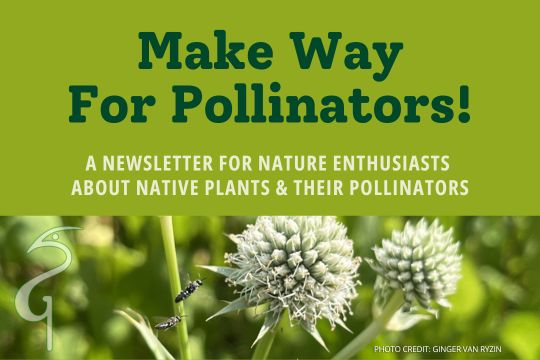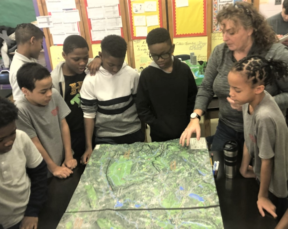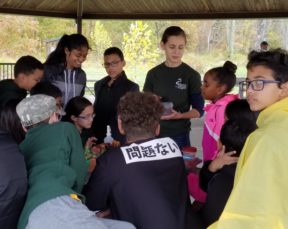Make Way for Pollinators, March 2025
Plant for Pollinators Upcoming Webinar with Nick Dorian, March 19th
Over 180 registered to listen, (live or recorded) to Bianca Wrights’ fabulous February webinar on the transformation of her own garden. If you haven’t seen her information packed presentation you can [contact us to request recording]. Bianca shared the step-by-step process of transforming her suburban Westfield Garden from typical ornamental species filled yard, to a thriving pollinator-welcoming space. Her journey, from a volunteer parent helping out at her daughter’s monarch butterfly garden planting at elementary school, to a habitual native insect observer in her own yard-turned-native-plant-laboratory was inspiring.
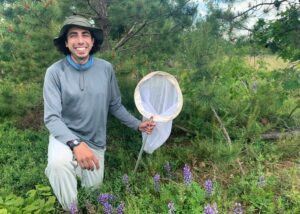

She was not opposed to plants that moved around of their own accord, accepting species popping up in new spaces as volunteers, and editing those that got a little too learn more about that species’ behavior, something that our next webinar speaker will also share!
Dr. Nick Dorian will present on the secret lives of wild bees this Wednesday, March 19th at 7pm. With over 4,000 species of native bees in North American, found in every shape, size, and color you can imagine, and some you won’t believe! Nick, an ecologist, naturalist and educator will introduce us all to the wild bees of the New England region. With him we’ll examine their varied lifestyles, habitat needs, and intricate relationships they have with native flowering plants and other insects. As Bianca found as she watched the slow transformation of her native garden, “plant it and they will come”, Nicks talk will set you up to know how to notice, appreciate, and help these important pollinators in your backyard. To register for the Webinar visit HERE.
Getting by With a Little Help from Our Friends
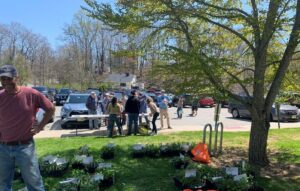

The Plant for Pollinators Partners:
- Publicize our webinars, sale details and volunteer opportunities to their local networks.
- Recruit volunteers for around 140 different 2-hour shifts during assembly week, April 28–May 2. We would love to have your help too! Volunteer information will go out at the beginning of April. (It’s a chance to work hard alongside other plant-lovers, share information and have fun!)
- Help coordinate transporting local orders from GSWA back to their towns for distribution.
- Host distribution events on May 3–4 (Often with other fantastic education to share.)


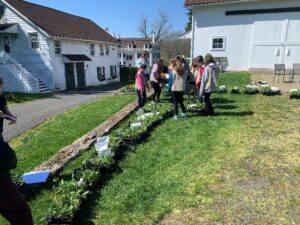

Bergen/Passaic Chapter Native Plant Society 


























Thanks to all our partners, new and old!
Monarchs–Bell Weather for the Environment
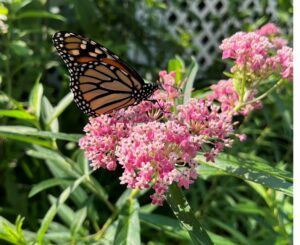

Monarchs are often used as a representative symbol or shorthand for all pollinators. For this reason, they provide a great case study for why knowing more about the life history of the pollinators that visit your yard can help you to more fully support their entire life cycle in the way you garden, practices you undertake and plants you install. The monarch’s lifecycle is inextricably tied to plants in the milkweed family- especially plants in the Asclepius genus. Throughout the US, there are almost 100 milkweed species, but only about a quarter of them are larval food plants for monarchs.
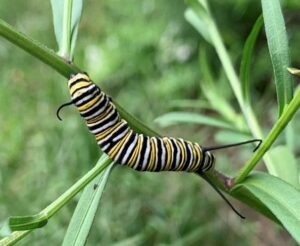

- Eggs are laid on the surfaces of milkweed leaves, primarily swamp, common and butterfly milkweed in our area (We have multiple milkweed species in the sale this year). Female butterflies lay around 300-500 eggs over a 2–4-week period.
- When the caterpillars hatch, they munch happily on the leaves of the milkweed, sometimes causing substantial defoliation (if you are lucky!) The caterpillars feed only on the leaves of milkweeds and are known as specialist herbivores. As they feed, caterpillars sequester the cardiac glycoside compounds that are present in the sticky latex like sap of the leaves, and gain protection from being eaten by vertebrate predators. Their brightly colored stripes warn potential predators that they are nasty tasting!
- Once grown through their larval stages, caterpillars pupate and undertake the incredible process metamorphosis- rearranging their entire body plan to that of a winged adult, all within a couple of weeks.
- Adults emerge from the pupal case, pumping their wings full of air, then head off to find a mate and start the cycle again, with the last generation in summer completing incredible long-distance migration to Mexico to overwinter in millions in select conifer forests.
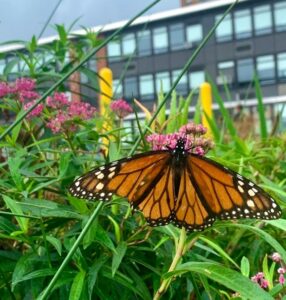

… And monarchs definitely need our help.
Recent research from the most recent World Wildlife Fund count from the Monarch butterfly biosphere reserve in Michoacan, Mexico show that while numbers increased in 2025 slightly from 2024’s horrific low of 2.2 acres to covering around 4.4 acres this winter their populations are still struggling. There are many reasons for this, including habitat loss, the droughts and floods of a changing climate, and reduced milkweed abundance due to changing agricultural practices and reliance on milkweed zapping pesticides in farms.
So, by planting milkweeds you can help the specialist monarch. But just think how many other less charismatic butterflies, bees, and wasps, either feeding generalists or specialists, in larval or adults’ stages, you can help by planting some of our other 37 species available in this year’s sale! That’s one reason why diversity is so important in the pollinator plant palette. GSWA plant for pollinators catalog and website gives information on some of the species a particular native perennial can attract, but we recommend you start to learn more about the lifecycles of some of the common pollinators that visit yards in your region and turn your yard into an all you can eat buffet for the larval and adults alike of our less flashy invertebrate friends!
Don’t Be a Neat Nik!


As you walk your yard, you might be tempted to start your spring cleanup- tidying up to prepare for the emergence of perennials in the coming weeks. For the sake of the invertebrates which are now calling your yard home…please don’t! While it can be tempting to cut back the dead stems of last year’s perennial growth, and remove leaves, seedheads and stems… These same structures can be valuable overwintering sites for eggs, larvae, or even overwintering adults.
Just waiting a few short weeks can give these insects time to emerge and move onto the next stage of their life cycle. If you simply can’t resist heading out with the clippers, consider leaving last year ‘s stems 8-24” tall, depending on the type of stem. Bee (pun intended!) especially kind to hollow or pithy stems which can be overwintering sites for solitary bees. You can move cut stems to less visible locations in the yard. That way any overwintering insects can still emerge successfully. Some gardeners rough chop the cut stems and use them as a rough mulch around the base of the soon to emerge perennial plants.
Use this early springtime desire to be in the yard instead to prepare another patch of yard for the deep plugs you will purchase at the plant sale! Now it is a great time to decide on your next pollinator bed area, mark it out, and plan what you will plant. Which direction does the bed face?, will it have light or deep shade? Full sun or particularly damp soils? This way you can search our catalog for plants on offer for the species that will thrive best at your site. If you are considering removing a piece of lawn (yay) now is a good time to prepare for early May planting.
Raid the recycling bin for some cardboard, stripped of plastic tape and labels, and simply spread it out several layers thick over the marked lawn area you will cover and plant. You can plant plugs 12-18 inches apart depending how quickly you want the area to fill in, and preparing the bed now will help you determine the number of plugs you will need. Water in the cardboard, then cover with arborists’ woodchips or a thick layer of last year’s leaves. Over the coming weeks, weed seeds will be suppressed, the soil underneath will be beautifully nurtured, and you can then plant your plugs directly through the mulch and cardboard layer, minimizing the amount of weed competition your young plugs will have to deal with.
